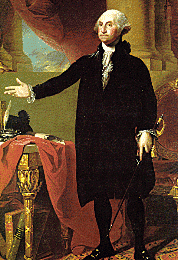Life, love, and leeks. What do they have in common? Glad you asked.
 Leeks belong to the Allium genus of plants, which includes garlic, chives and onions. Since the onion is the most versatile and popular of these pseudo-veggies — sorry, dear friend Garlic! — and has an infamous reputation for being able to bring tears to the eyes of even the toughest of us, we’ll examine onions in today’s post.
Leeks belong to the Allium genus of plants, which includes garlic, chives and onions. Since the onion is the most versatile and popular of these pseudo-veggies — sorry, dear friend Garlic! — and has an infamous reputation for being able to bring tears to the eyes of even the toughest of us, we’ll examine onions in today’s post.

Onions are chock full of Vitamin C, B1, B6, Potassium and fiber. George Washington used to chow down on a raw onion whenever he felt a cold coming on. We’re not sure if it warded off the cold, but it sure kept Martha away!
Trivia time: Way back in 1648, what was the first thing the Pilgrims planted in the New World? It certainly wasn’t corn or pumpkins. And although Europeans brought their onions with them to North America, Native Americans already knew all about onions: they used them in cooking, medicinal poultices, and dyes!
Athletes in Ancient Greece ate lots of onions, believing they “balanced” the blood. Roman gladiators were rubbed down with onion juice to firm up their muscles, and in the Middle Ages, people could even pay their rent with onions. And doctors frequently prescribed onions to relieve headaches, coughs, snakebite and hair loss. And get this, the ancient Egyptians actually worshipped the onion! They believed its spherical shape and concentric rings symbolized eternal life.

Which reminds us, we promised to compare onions to life and love, didn’t we? Let’s list some similarities. First, like life and relationships (the “love” part of our post), the onion takes many differing forms. There are common onions, available in three colors (yellow onions, red onions, white onions). There are wild onions, spring onions, scallions, and pearl onions. Onions come fresh, frozen, dehydrated, and canned. They can be chopped, pickled, caramelized, minced, and even granulated. All this variety, all this utility, reminds us of the diverseness of relationships, and the many turns that life can take.
And like an onion, life and people have multiple layers. Our experiences in this world are like periodically peeling back another layer of the “onion” to reveal new mysteries, new opportunities, new lessons. And the same can be said of relationships: in order to truly get to know someone — and to fully understand why we do the strange, idiosyncratic things that we all do — we again need to peel back the layers that insulate people from people.
Onions and Life are fascinating and many splendored things! So are onions and people!
“How numerous are your works, LORD! You have made them all wisely; the earth is filled with your creations.” (Psalm 104:124 ISV)
Thursday we’ll discuss why peeling back the layers of life and relationships is exactly like cutting into an onion! Tune in for more Kitchen Wisdom about Life, Love and Leeks — er, onions!

